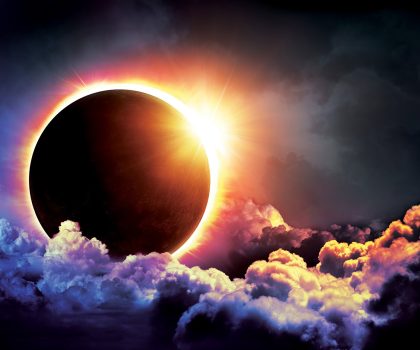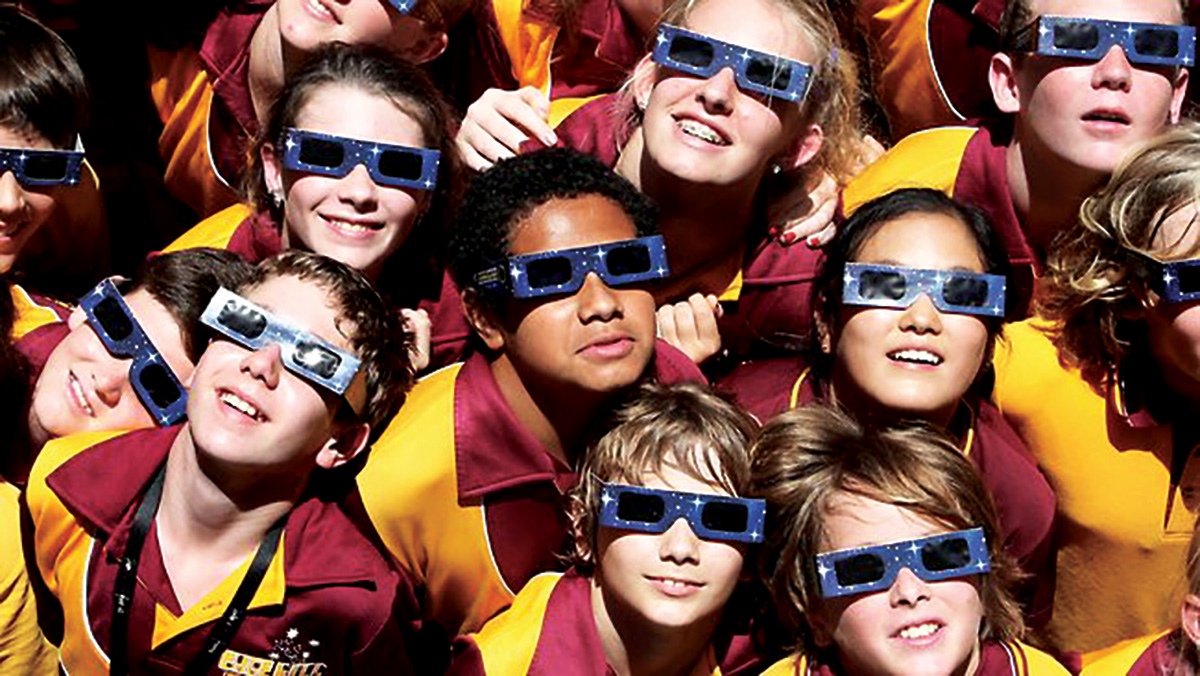Here’s what’s going to happen on April 8—and how you can enjoy the show safely

By Lorraine Sipos, Contributing Writer
Northeast Ohio will soon have front-row seats for an extraordinary celestial show. On April 8, we will have the rare opportunity to view the first total eclipse of the sun in Ohio since 1806. If you miss it, the show won’t return for 75 years—when everyone will be partying like it’s 2099.
How to Prepare
To prepare for Eclipse Day, first decide on a viewing location. The eclipse will start at about 2 p.m. when the moon starts to block out the southwest side of the sun and continues until about 4:30 p.m. Totality—those magical few moments when the moon totally blocks the sun—will last from 3:13:45 p.m. until 3:17:35 p.m., about 3 minutes, 50 seconds.
Because school dismissals would coincide with that timing, most districts have decided to cancel classes for the day. Many government offices and small businesses will also close.
Eclipse viewing celebrations and educational programs are planned throughout Northeast Ohio for the extended weekend. They range from a three-day “Total Eclipse Fest” at Great Lakes Science Center to smaller events at parks, libraries and fairgrounds.
The Guardians will hold their home opener at 5:10 p.m., an hour later than in previous seasons. Ballpark gates will open at 2 p.m. for fans to experience the entire eclipse prior to the first pitch.
Many of us will choose to enjoy the eclipse from our own neighborhoods. The key is to find a place with an unobstructed view of the southwest sky. To gain the full effect, avoid places where streetlights turn on automatically when the sky turns dark.
Because it’s going to get dark.
Eclipse glasses or solar viewers are necessary to safely view the eclipse. The sun’s rays are not different during an eclipse, but staring at the sun anytime may cause serious eye damage. Sunglasses will not be enough. Look for eyewear with an international standard rating of ISO 12312-2. Cell phones and other cameras, telescopes and binoculars will also need solar filters.
What Will Happen?
The “path of totality” will be a 124-mile-wide band across Northern Ohio where the moon will completely eclipse the sun. The maximum duration of total darkness—that 3 minutes, 50 seconds—will occur along a centerline that goes through Norwalk, Lorain, and Avon Lake. That duration will decrease to about two minutes at the edges of the band. During totality is the only safe time to view the eclipse with the naked eye.
These times vary by a few seconds, depending on your exact location. Using the simulator on eclipse2024.org, you can preview what to expect and the duration time for each phase at the location you choose.
Cleveland’s NASA Glenn Research Center provided a description of what to expect when viewing the eclipse. At about 2 p.m., the sun will be high in the southeast sky and the moon will start to move in front of the sun’s disk. Shadows will become more defined as the normal scattering effect of sunlight is diminished.

Around 3 p.m., moments before the sun is completely eclipsed, tiny dots called Baily’s Beads will appear. They are caused as the sun shines through craters around the edge of the moon. The last of these beads will look like a glittering diamond ring. The temperature will drop by about ten degrees and crickets will start chirping as if night has fallen.
As soon as the sun begins to reappear, the show will play in reverse. Replace your eyewear to look at the remaining partial phases, which will end around 4:30 p.m.
One eclipse game-changer could be the weather. Since 1948, April 8 has been overcast 62% of the time. In that case, a viewing location close to the lake may be preferred. Lake Erie is still quite cold in early April, and atmospheric conditions create fewer clouds than further inland. Even with clouds, you can still experience the transition to daytime darkness and the reaction of wildlife.

Expect a Crowd
With a show this tremendous, we expect many visitors to join us. Northeast Ohio is a one-day drive for an estimated 70% of the U.S. population. The Ohio Emergency Management Agency estimates anywhere from 150,000 to 575,000 people will visit statewide.
Anticipating such an influx of tourists, state and county emergency service providers are making plans to make the eclipse a safe and pleasurable experience for all. Officials have been getting advice from similar communities that were in the path of totality for the 2017 total solar eclipse. They report that hysteria is unnecessary, but proper planning is.
Matt Bruning, press secretary for the Ohio Department of Transportation, said they are making the same preparations for this temporary population increase as they do for any major holiday travel event. Their plans include having crews with extra fuel to top off potentially stranded drivers. He advises anyone who is traveling that weekend to have a full tank of gas. Also be prepared if the large influx of people impacts cell phone reception. Have a paper map handy if you are unfamiliar with the area.
And to avoid sitting in traffic, don’t rush home after the period of totality. Take the time to fully enjoy this once-in-a-lifetime show.
